Are you looking to spruce up your living space? Maybe you just moved into a new home, or perhaps you’re tired of your current décor and want to freshen things up. Whatever your reason, it’s essential to have a basic understanding of interior design styles. With so many to choose from, it can be overwhelming to know where to start.
In this article, we’ll discuss the 31 most important popular interior design styles you should know about. From traditional to contemporary and everything in between, we’ve got you covered. So grab a cup of coffee, sit back, and let’s get started.
In This Post
Nordic
Bohemian
Glamorous
Country
Industrial
Coastal
Art-Deco
French Country
Japandi
Maximalist
Minimalist
Organic Minimalist
Mid-Century Modern
Hollywood Regency
Shabby Chic
Mediterranean
Gothic
Victorian
Transitional
Eclectic
Retro
Rustic Chic
Zen
Pop Art
Southwestern
Art Nouveau
Colonial
Mission
Tuscan
Scandinavian
Traditional
Conclusion
FAQs
1. Nordic
The Nordic design style is known for its simplicity, functionality, and minimalism. It focuses on creating a bright and airy space, often with natural materials and a neutral color palette. The furniture is typically sleek and modern, with clean lines and a minimalist aesthetic.
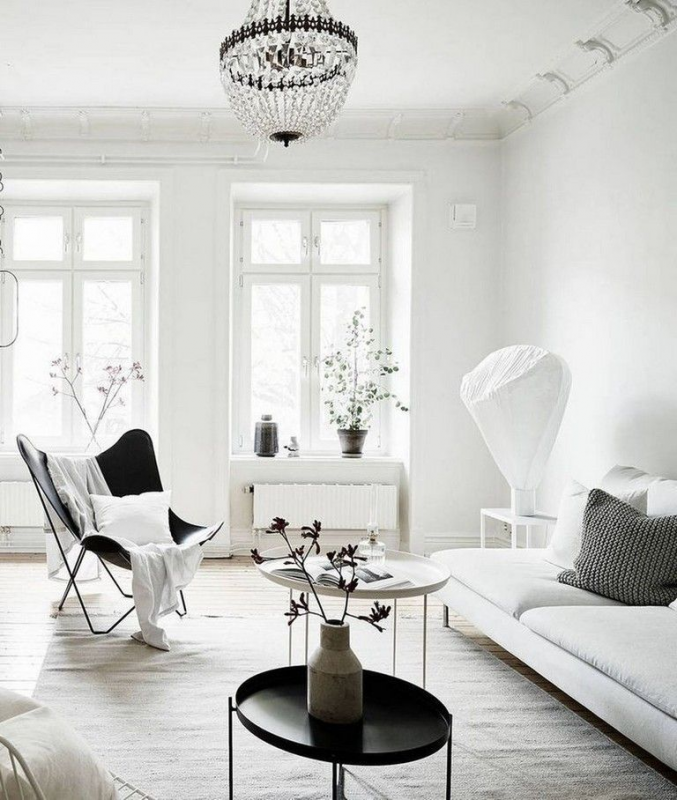
Best characteristics of Nordic Design:
- Functionality: One of the main characteristics of Nordic design is its focus on functionality. Furniture and decor are designed to be simple, practical, and efficient.
- Minimalism: Nordic design emphasizes minimalism and clean lines. This means that furniture and decor tend to be understated and free of excess ornamentation.
- Light and bright: Nordic design makes use of natural light and bright colors to create a feeling of spaciousness and airiness. Light wood tones and white walls are common in Nordic interiors, and pops of color are often added through accessories like throw pillows and artwork.
2. Bohemian
Bohemian, or boho, design is all about mixing and matching different patterns, textures, and colors to create a relaxed and eclectic look. This style often incorporates vintage and handmade pieces, as well as natural materials like wood and rattan.
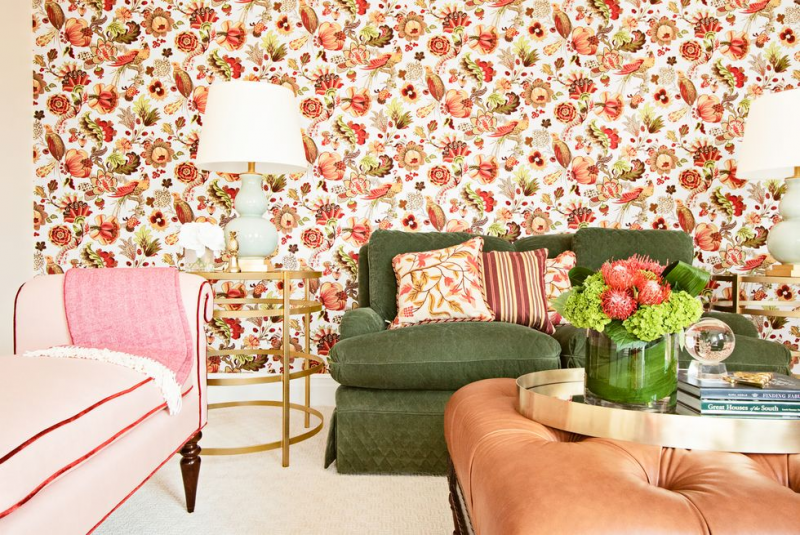
Best characteristics of Bohemian Design:
- Eclectic: One of the main characteristics of Bohemian design is its eclectic mix of styles, patterns, and textures. Bohemian interiors often feature bold, colorful fabrics, vintage furniture, and a mix of cultural influences.
- Free-spirited: Bohemian design is all about expressing individuality and creativity. This means that there are no hard and fast rules when it comes to color schemes, furniture styles, or decor choices.
- Cozy and comfortable: Bohemian interiors are known for their cozy, comfortable feel. Soft textures like shaggy rugs, woven blankets, and plush pillows are often used to create a relaxed and inviting atmosphere.
3. Glamorous
Glamorous design is all about creating a luxurious and elegant space. This style often features rich fabrics, metallic accents, and bold patterns. It can range from old Hollywood glam to modern and sophisticated.
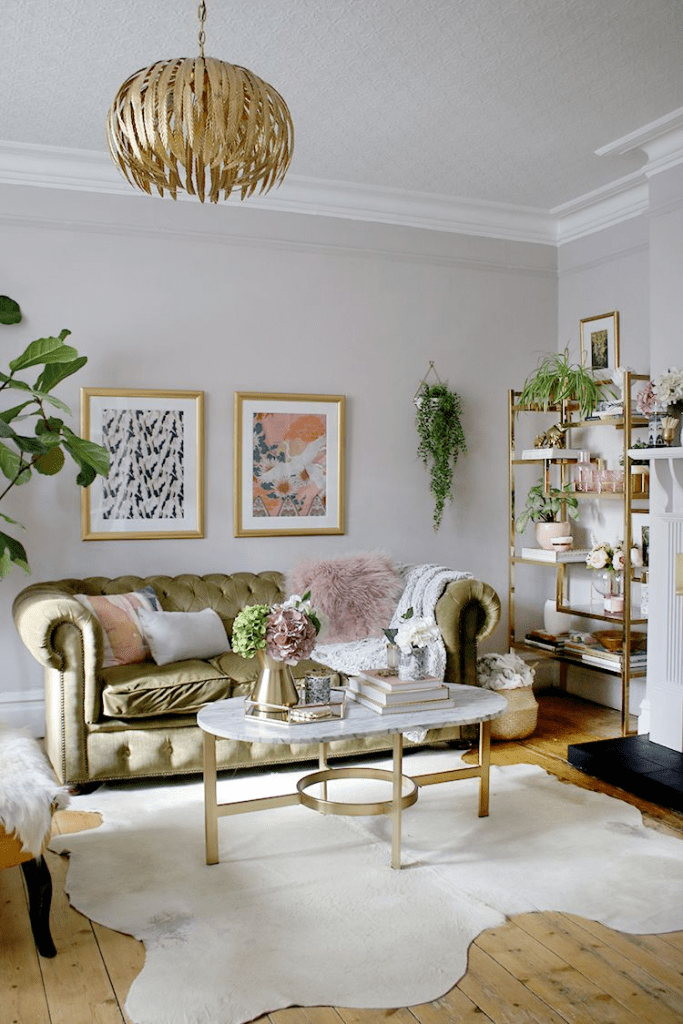
Best characteristics of Glamorous Design:
- Luxurious Materials: Glamorous design features high-end materials such as silk, velvet, and fur to add texture and depth to the space. These materials are often paired with shiny metallic accents like gold, silver, and copper to create a sense of opulence.
- Bold Patterns: This style isn’t afraid of pattern and often features bold prints such as animal prints, geometric shapes, or large florals. These patterns are used sparingly to add interest and drama to the space.
- Statement Pieces: Glamorous design incorporates statement pieces that are often the focal point of the room. These could be anything from a chandelier dripping with crystals, a large ornate mirror, or a bold piece of artwork. The key is to create a sense of drama and grandeur in the space.
4. Country
The country design style is inspired by the rustic charm of farmhouses and cottages. This style often features natural wood finishes, floral patterns, and vintage accessories. It creates a warm and inviting atmosphere that is perfect for a cozy home.
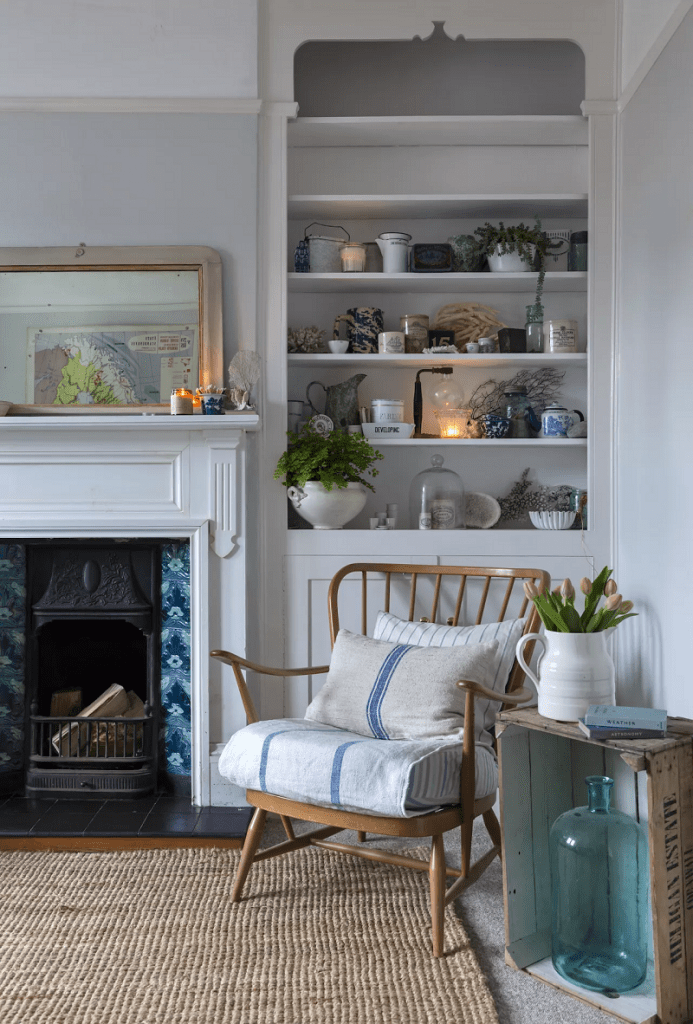
Best characteristics of Country Design:
- Rustic elements: Country design features natural materials and rustic elements such as exposed wooden beams, stone fireplaces, and antique furniture.
- Warm and cozy: The overall feel of a country design is warm, cozy, and inviting. Soft textiles, such as blankets and throw pillows, are often used to create a comfortable atmosphere.
- Farmhouse-style: Country design often features a farmhouse-style aesthetic, with a focus on practicality and functionality. This can include features such as a large kitchen table for family gatherings, open shelving for storage, and a mudroom for storing boots and coats.
5. Industrial
Industrial design is inspired by the raw and unfinished look of factories and warehouses. This style often features exposed brick, metal finishes, and a neutral color palette. It creates a cool and edgy atmosphere that is perfect for a modern loft or apartment.
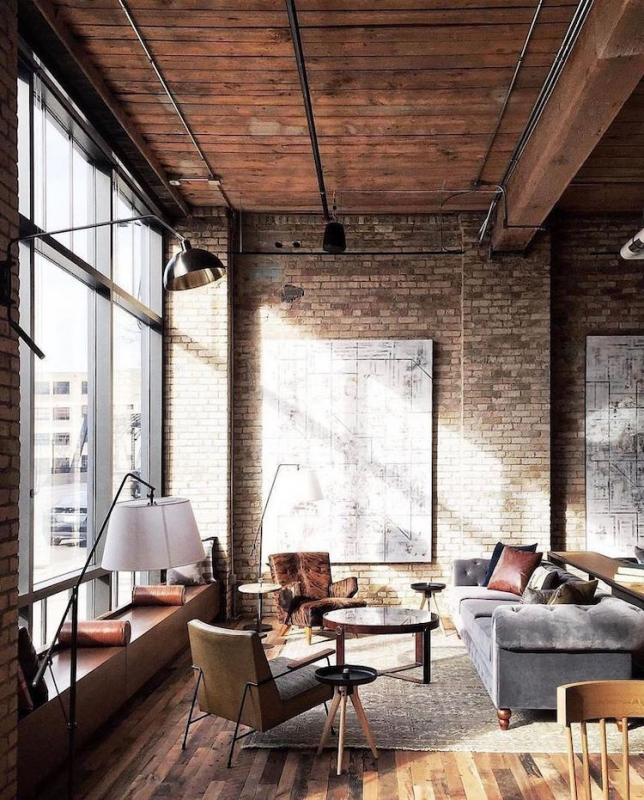
Best characteristics of Industrial Design:
- Raw and unfinished materials: Industrial design typically utilizes raw and unfinished materials such as exposed brick, concrete, and metal. The use of these materials adds an element of texture and creates a sense of roughness in the space.
- Functional design: Industrial design emphasizes functionality and practicality. Spaces are designed with a purpose and are often stripped of unnecessary ornamentation or decoration. This creates a clean and minimalistic feel.
- Utilitarian objects and decor: Industrial design often incorporates utilitarian objects and decor such as vintage metal signs, old factory equipment, and reclaimed wood furniture. These objects add to the overall industrial aesthetic and create a sense of nostalgia and history in the space.
6. Coastal
The coastal design style is inspired by beachside living and evokes a light, airy, and relaxed feel. The color palette typically consists of soft blues, greens, and sandy beige tones, mimicking the natural hues of the ocean and the beach. This style often incorporates natural elements such as seashells, driftwood, and woven textures, and furniture with a weathered, distressed finish.
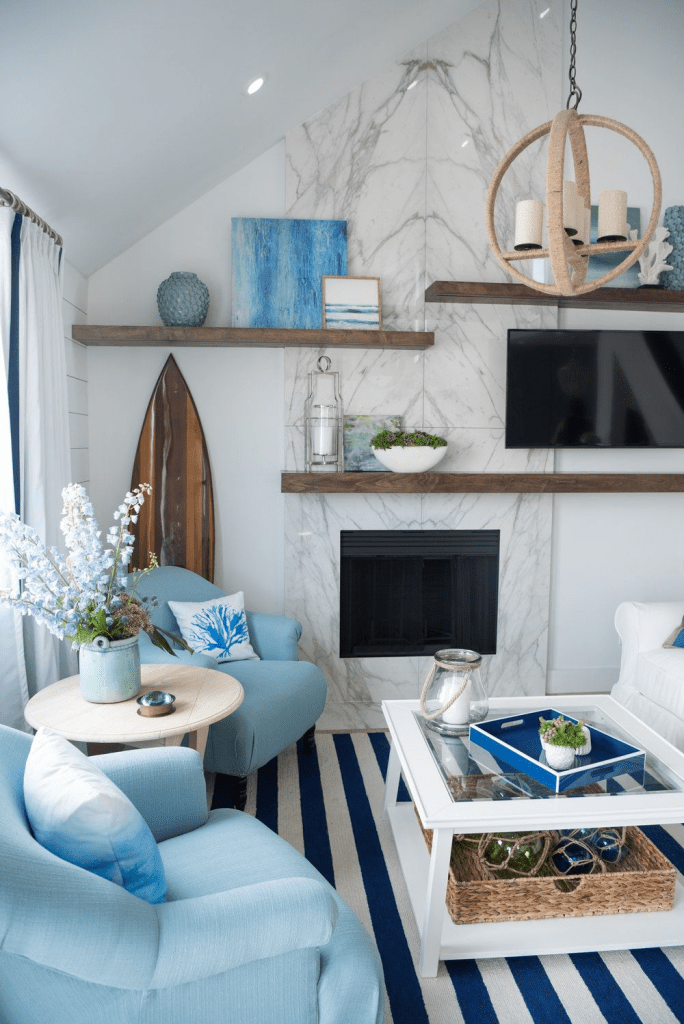
Best characteristics of Coastal Design:
- Color palette: Coastal design features a light and airy color palette with shades of blue and green inspired by the ocean, sand, and sky. White is also a prominent color in coastal design, creating a clean and fresh look.
- Natural elements: Coastal design incorporates natural elements found by the sea such as seashells, driftwood, and coral. These elements are often used as decor, adding texture and interest to the space.
- Casual and relaxed atmosphere: Coastal design is known for its casual and relaxed atmosphere, making it a popular choice for vacation homes and beach houses. The use of comfortable and casual furniture with slipcovers and natural fabrics also contributes to the overall laid-back feel of the design style.
7. Art Deco
Art Deco is a style that emerged in the 1920s and 1930s, characterized by bold geometric shapes, lavish ornamentation, and a glamorous, luxurious feel. This style often features rich materials such as marble, brass, and velvet, and is known for its use of mirrored surfaces and sleek, streamlined silhouettes.
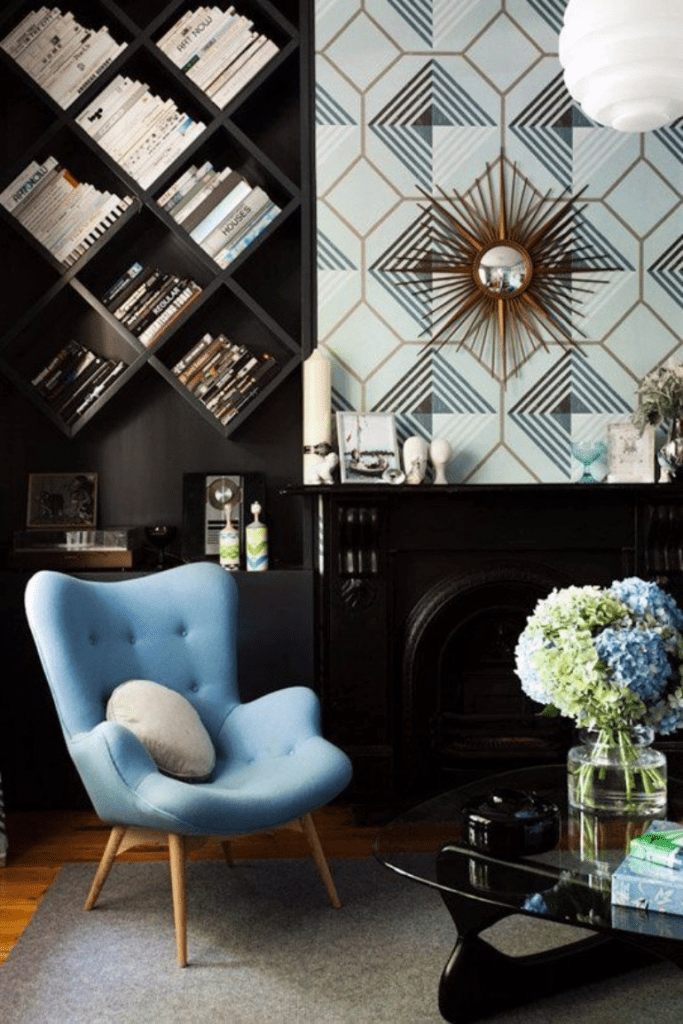
Best characteristics of Art Deco Design:
- Geometric Shapes: Art Deco is characterized by the use of geometric shapes, such as triangles, circles, and squares. These shapes are often incorporated into the design of furniture, lighting fixtures, and decorative items.
- Luxurious Materials: The use of luxurious materials, such as marble, exotic woods, and metals like gold and chrome, is another key characteristic of Art Deco. These materials add a sense of opulence and glamour to the design.
- Streamlined Silhouettes: Art Deco design features streamlined and aerodynamic silhouettes, which were influenced by the machine age and the rise of industrialization. Furniture and decorative items often have a sleek and angular look, with clean lines and a sense of movement.
8. French Country
French Country is a warm and inviting design style that incorporates elements of the rustic countryside of France. This style often features soft, muted color palettes, natural materials such as wood and stone, and traditional patterns such as toile and floral prints. Furniture in this style is often ornate and intricately carved, with a comfortable and relaxed feel.
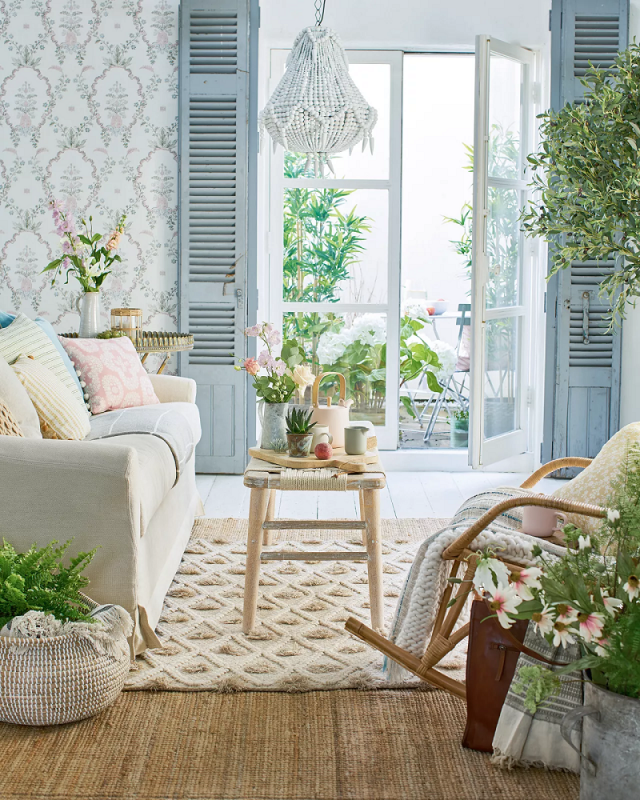
Best characteristics of French Country Design:
- Rustic and charming: French country design is known for its rustic and charming aesthetic, which features natural materials like stone and wood, as well as soft, muted color palettes.
- Ornate details: This design style often includes ornate details like intricate carvings, curved lines, and elegant scrollwork, adding a touch of elegance to the rustic charm.
- Mixed patterns and textures: French country design incorporates a mix of patterns and textures, including floral prints, stripes, and checks, often combined with natural materials like linen, burlap, and leather. This creates a cozy and inviting atmosphere, perfect for a countryside home.
9. Japandi
Japandi is a fusion of Japanese and Scandinavian design styles, characterized by a minimalist aesthetic, natural materials, and a focus on functionality. This style often features simple, clean lines, muted color palettes, and a mix of wood and metal materials. Japandi also incorporates the Japanese concept of wabi-sabi, which values imperfection and celebrates the beauty of natural materials.
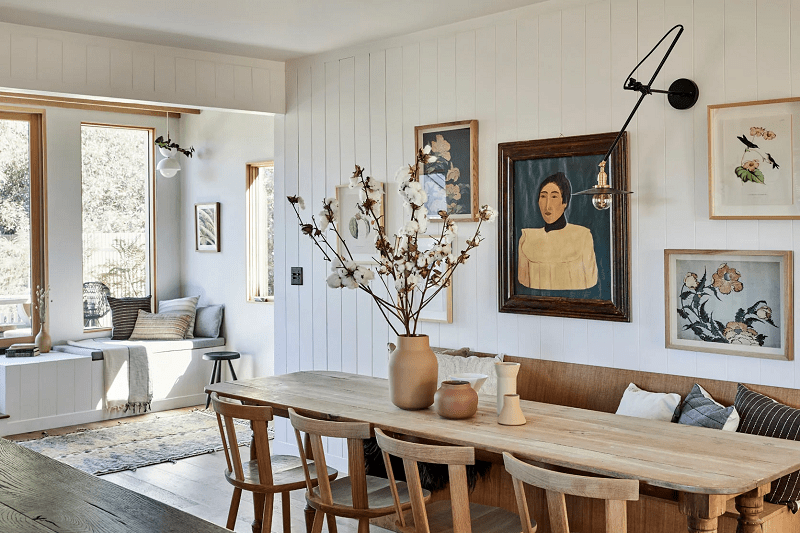
Best characteristics of Japandi Design:
- Minimalism: Japandi design is rooted in the principles of minimalism and simplicity, with a focus on decluttering and reducing excess.
- Natural elements: The design incorporates natural materials such as wood, stone, and bamboo, often left in their raw state or with minimal finish.
- Neutral color palette: Japandi design features a muted color palette of neutral tones such as beige, grey, and white, with occasional pops of color in soft greens or blues.
10. Maximalist
Maximalist design is all about embracing bold colors, patterns, and textures to create a visually rich and layered space. This style often incorporates eclectic elements and a mix of vintage and modern pieces. Maximalist design also encourages mixing and matching patterns, textures, and colors to create a cohesive and dynamic space.
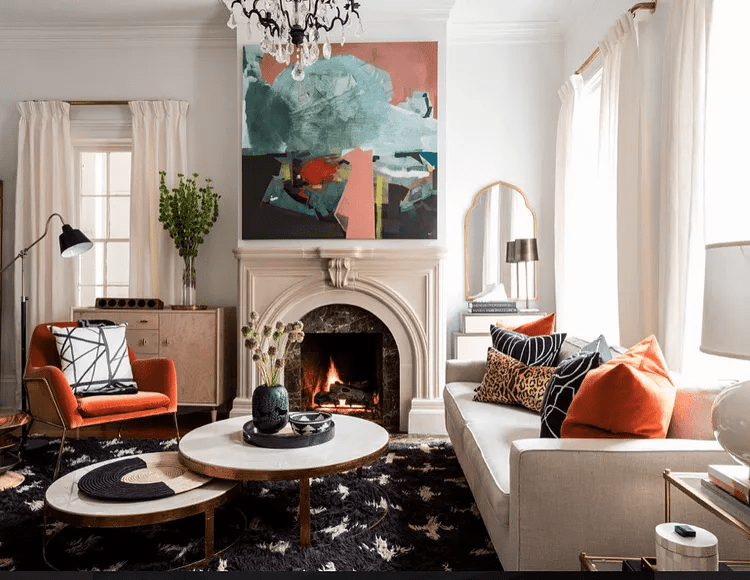
Best characteristics of Maximalist Design:
- Bold and eclectic: Maximalist design is characterized by a bold and eclectic approach, where patterns, colors, and textures are layered to create a visually stimulating and dynamic space.
- Personalized and expressive: Maximalism allows for a high level of personalization and self-expression in design. The use of unique and unconventional decor pieces, such as vintage finds, statement art, and collected items, helps to create an individualized and eclectic space.
- More is more: Unlike minimalist design, which emphasizes simplicity and restraint, maximalism embraces an “everything but the kitchen sink” approach. This means that there are no rules regarding the number of colors, patterns, or textures used, and the overall design is intended to be abundant and over-the-top.
11. Minimalist
Minimalist design is the antithesis of maximalism, characterized by a stripped-down, pared-back aesthetic that emphasizes simplicity and functionality. This style often features a neutral color palette, clean lines, and a focus on open space and natural light. Furniture in this style is typically understated and functional, with little to no ornamentation.
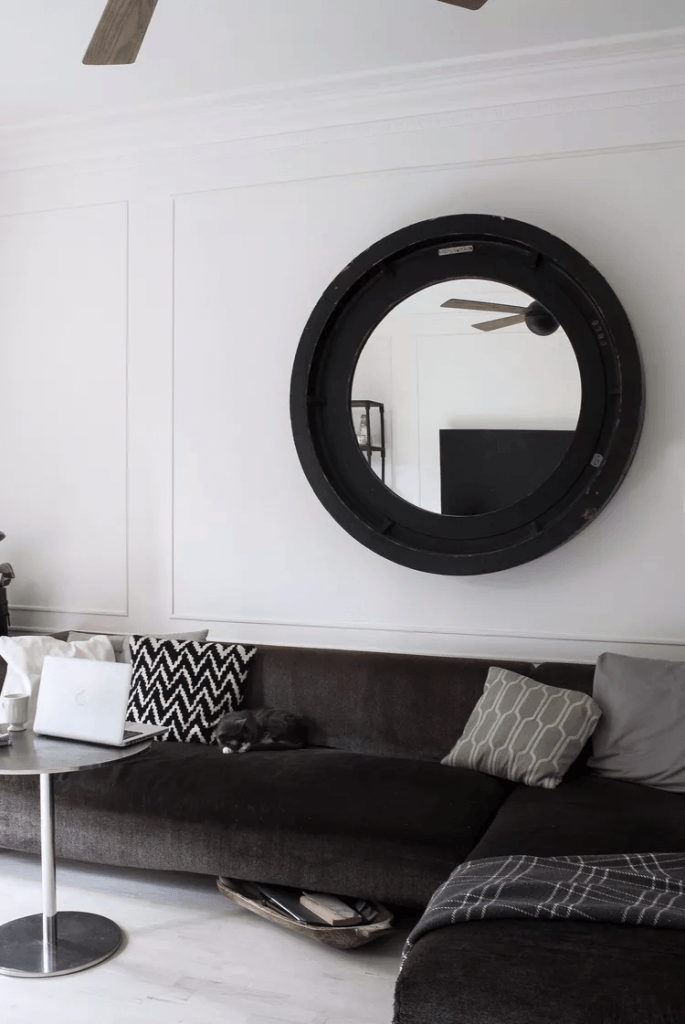
Best characteristics of Minimalist Design:
- Simplified and streamlined: Minimalist design focuses on using only the essential elements to create a clean and uncluttered look. Lines are clean and simple, and forms are often geometric and repetitive.
- Neutral color palette: Minimalist spaces are typically designed with a neutral color palette, such as white, black, beige, or grey. These colors help to create a calming and serene atmosphere.
- Functionality: Minimalist design is all about function over form. Furniture and decor are selected for their practicality and usefulness rather than their ornate or decorative qualities. Everything in the space has a purpose and is carefully considered for its role in the overall design.
12. Organic Minimalist
Organic Minimalist design combines the simplicity of minimalism with the warmth and texture of natural materials. This style often features earthy colors and textures, such as wood, stone, and natural fibers. Furniture in this style is typically simple and functional, with an emphasis on quality craftsmanship and natural materials.
If you are looking for a way to style your space with wall art without breaking your piggy bank, then I recommend reading “10 Surprising Benefits of Printable Wall Art”
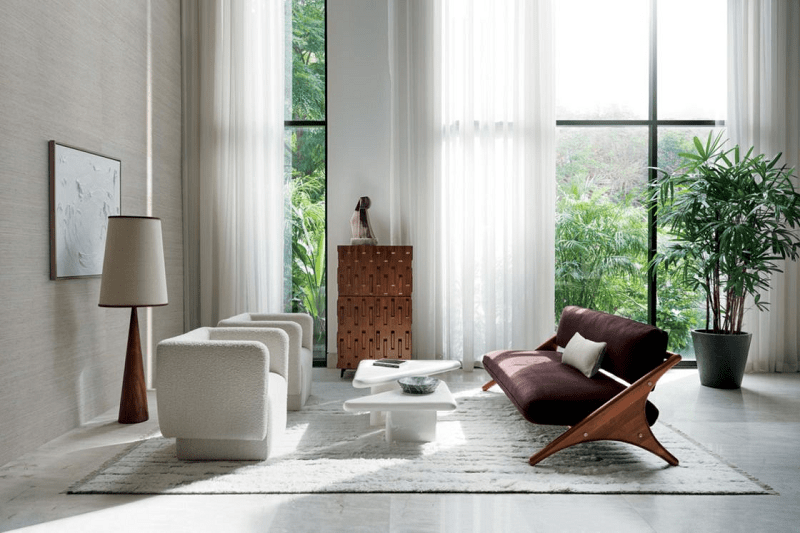
Best characteristics of Organic Minimalist Design:
- Emphasis on natural elements: Organic Minimalism prioritizes the use of natural and organic materials, such as wood, stone, and plants, to create a sense of calm and tranquility.
- Simple and clean lines: Similar to traditional Minimalism, Organic Minimalism favors clean lines and simplicity in design, but with a softer, more natural touch.
- Neutral color palette: A muted, earthy color palette with shades of beige, white, and gray is often used in Organic Minimalist design to create a soothing and peaceful atmosphere.
13. Mid-Century Modern
Mid-century modern design is a style that emerged in the mid-20th century and is characterized by a clean, streamlined aesthetic, and a focus on functionality. This style often features warm wood tones, bold geometric shapes, and a mix of contrasting materials such as wood, metal, and plastic. Furniture in this style is typically simple and functional, with a nod to the sleek and futuristic designs of the time period.
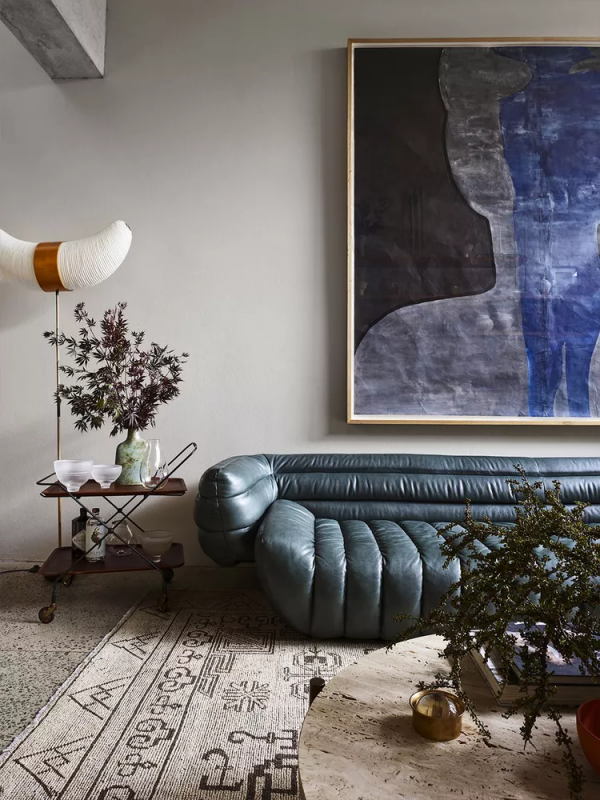
Best characteristics of Mid-Century Modern Design:
- Clean lines: Mid-century modern design is characterized by clean and simple lines. Furniture, architecture, and decor pieces all feature straight lines, geometric shapes, and minimal ornamentation.
- Organic shapes and materials: Along with the straight lines, mid-century modern design incorporates organic shapes and materials. This includes furniture with curved lines, natural wood finishes, and fabrics like wool, leather, and linen.
- Functionality: Mid-century modern design emphasizes functionality and practicality. Furniture pieces are designed with both form and function in mind, with an emphasis on simplicity and utility.
14. Hollywood Regency
Hollywood Regency is a glamorous and luxurious design style that takes its inspiration from the golden age of Hollywood. This style often features bold colors, metallic accents, and luxurious materials such as velvet and silk. Furniture in this style is typically ornate and glamorous, with a focus on comfort and indulgence.
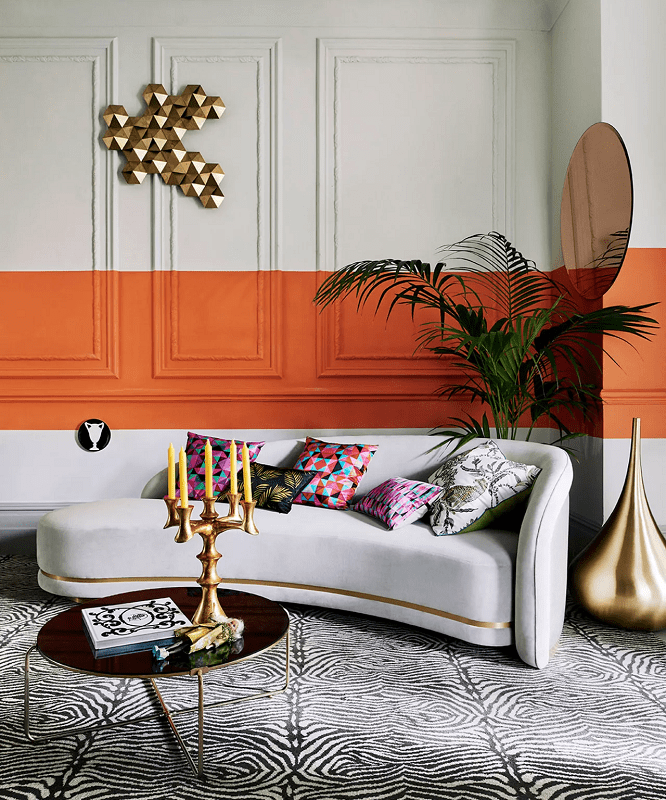
Best characteristics of Hollywood Regency Design:
- Bold Colors and Patterns: Hollywood Regency design embraces bold colors, such as black, white, gold, and silver, and uses them in combination with vibrant patterns, such as stripes, animal prints, and geometric shapes.
- Luxurious Materials: This style favors luxurious and high-end materials such as velvet, silk, and satin, often incorporating them in accent pieces like pillows, curtains, and upholstery.
- Glamorous Touches: Hollywood Regency design incorporates glamorous touches such as mirrors, metallic accents, and crystal chandeliers to add a touch of elegance and sophistication to the space. The overall effect is one of opulence and luxury.
15. Shabby Chic
Shabby Chic is a design style that incorporates elements of vintage and rustic design, characterized by a light and airy feel and a mix of feminine and masculine elements. This style often features pastel colors, vintage textiles, and distressed finishes.

Best characteristics of Shabby Chic Design:
- Vintage elements: Shabby Chic style is known for its use of vintage and antique elements that create a nostalgic and charming atmosphere.
- Soft color palette: Soft pastel colors, such as white, cream, and light pink, are often used in Shabby Chic design to create a calming and relaxing ambiance.
- Distressed finishes: Furniture and décor in the Shabby Chic style often feature a distressed finish, giving them a worn and weathered look that adds to the vintage aesthetic of the space.
16. Mediterranean
Inspired by the coastal regions of Spain, Italy, and Greece, Mediterranean interior design is characterized by warm colors, natural materials, and ornate details. Think rustic wood beams, colorful tile work, and wrought-iron accents. Mediterranean style is also known for its use of natural light and open spaces.
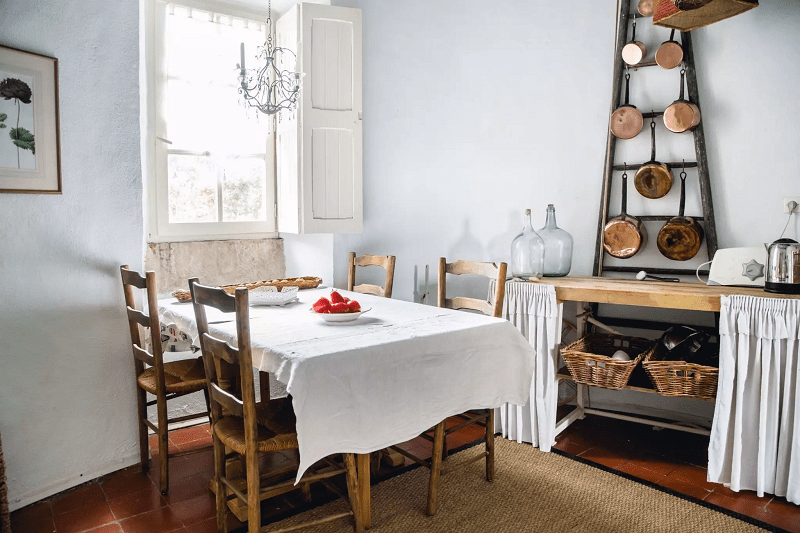
Best characteristics of Mediterranean Design:
- Earthy colors and natural textures: Mediterranean design is known for its warm and earthy colors such as beige, terracotta, and olive green. It also makes use of natural textures like stone, brick, and wood.
- Ornate details and patterns: Mediterranean design features ornate details and patterns, often inspired by Moorish and Byzantine architecture. This includes intricate tilework, wrought-iron accents, and arched doorways and windows.
- Outdoor living spaces: The Mediterranean climate lends itself to outdoor living, so it’s common to see Mediterranean homes with outdoor patios, courtyards, and balconies. These spaces often feature comfortable seating, lush greenery, and decorative accents like water fountains or pottery.
17. Gothic
Gothic interior design is known for its dark and dramatic atmosphere. This style originated in Europe during the Middle Ages and is characterized by pointed arches, ribbed vaults, and intricate stone carvings. Gothic interiors often feature rich, jewel-toned colors, ornate patterns, and dramatic lighting.
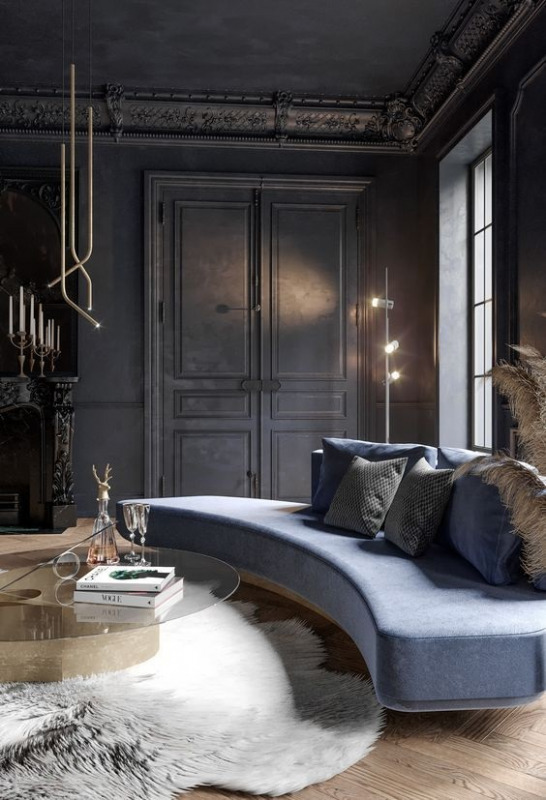
Best characteristics of Gothic Design:
- Ornate and decorative: Gothic design is characterized by intricate and detailed ornamentation, often featuring ornate carvings and embellishments in furniture, architecture, and decor.
- Dark and dramatic: The color palette of Gothic design often features dark and dramatic colors such as black, deep red, and dark green, creating a sense of mystery and drama.
- Gothic arches and motifs: Gothic design often incorporates arches and motifs inspired by medieval Gothic architecture, such as pointed arches, ribbed vaults, and flying buttresses. These elements can be seen in furniture, decor, and even in architecture in modern Gothic-inspired homes.
18. Victorian
The Victorian era, which spanned from 1837 to 1901, was a time of great change in architecture and interior design. Victorian interiors are characterized by ornate details, rich colors, and a sense of grandeur. This style often incorporates elements of Gothic and Rococo design, including elaborate moldings, carved wood furniture, and intricate patterns.
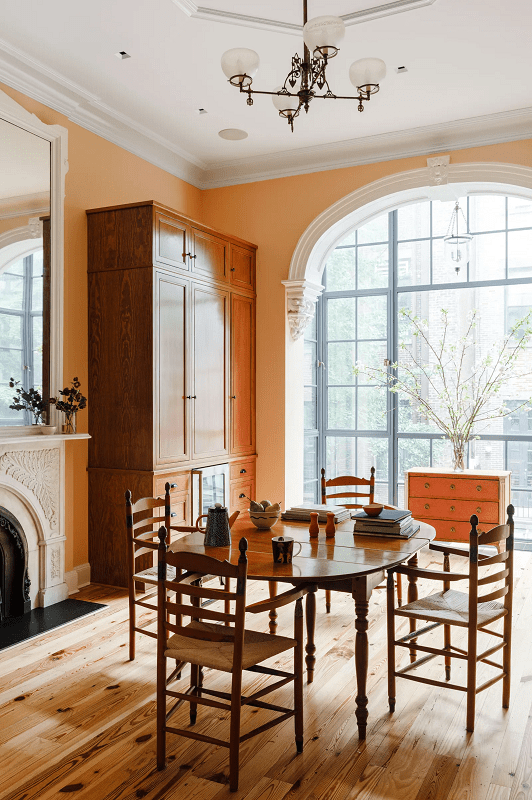
Best characteristics of Victorian Design:
- Ornate details: Victorian design is known for its elaborate and decorative details. This includes intricate patterns, carvings, and moldings on furniture, walls, and ceilings.
- Rich color palette: Victorian design features a rich and bold color palette, often incorporating deep reds, greens, blues, and golds. These colors are used in textiles, wallpapers, and other decorative elements.
- Eclectic mix of styles: Victorian design is often a mix of different styles, including Gothic, Rococo, and Baroque. This results in a rich and layered aesthetic that is full of character and history.
19. Transitional
Transitional interior design blends traditional and contemporary styles to create a timeless, sophisticated look. This style often incorporates neutral colors, simple lines, and a mix of textures and patterns. Transitional design is all about balance, and it can be a great choice for those who want a classic look with a modern twist.
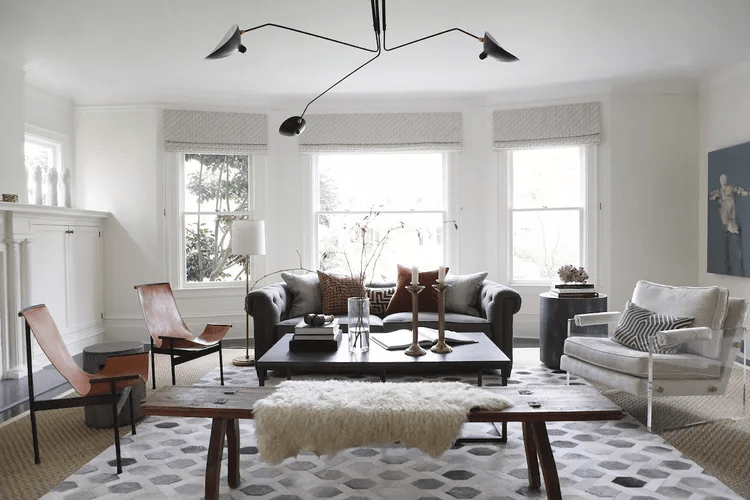
Best characteristics of Transitional Design:
- Mixture of classic and contemporary: Transitional design blends traditional and modern design elements, creating a balance between the two. This style often features clean lines and simple shapes, but also incorporates classic details like moldings, arches, and decorative elements.
- Neutral color palette: Transitional design favors a neutral color scheme, often incorporating shades of beige, gray, and white, which provide a sense of calm and serenity. However, pops of color can also be added to add interest and depth to the space.
- Textures and patterns: Texture and pattern are used to add interest and depth to a transitional space. Soft textures, such as velvet and chenille, are often used in upholstery, while patterns like stripes, plaids, and florals can be found in textiles like curtains and throw pillows.
20. Eclectic
Eclectic interior design is all about mixing and matching different styles and periods to create a unique and personalized space. This style often incorporates vintage and antique pieces alongside more modern elements. Eclectic interiors are characterized by bold colors, unexpected patterns, and an overall sense of creativity and playfulness.
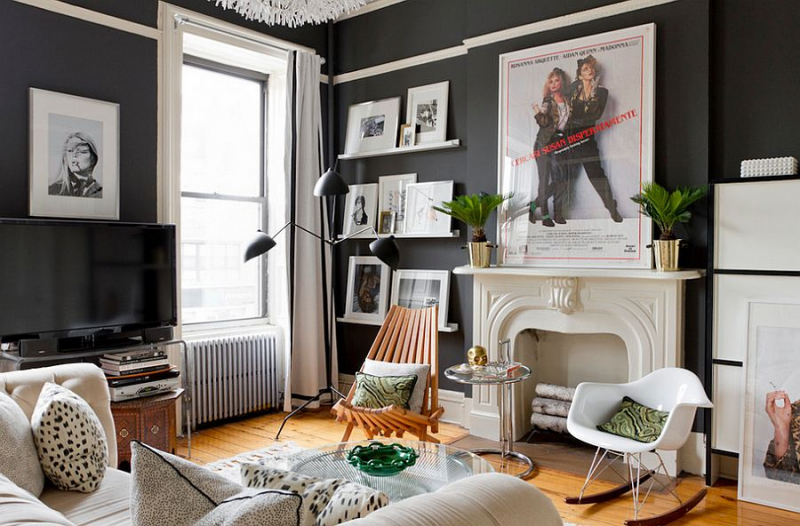
Best characteristics of Eclectic Design:
- Mixing and matching: Eclectic design is characterized by a blending of different styles, periods, textures, and colors. It’s all about combining contrasting elements to create a cohesive whole.
- Personalization: Eclectic design allows for personal expression and reflects the individuality of the homeowner. There are no strict rules to follow, so it’s a great opportunity to showcase your personality and style.
- Unexpected touches: Eclectic design often incorporates unexpected or unconventional pieces, such as vintage or one-of-a-kind items. These unique touches add visual interest and create a sense of intrigue in the space.
21. Retro
Retro interior design takes inspiration from the past, particularly the 1950s, 60s, and 70s. This style often features bright colors, geometric patterns, and funky accessories. Retro interiors are all about nostalgia and fun, and they can be a great way to add a playful touch to your home.
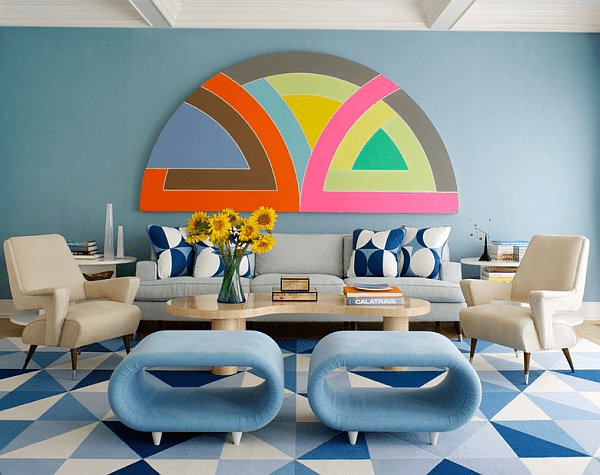
Best characteristics of Retro Design:
- Nostalgic elements: Retro design incorporates elements and motifs from past decades, particularly from the mid-20th century, such as bold patterns, bright colors, and geometric shapes.
- Playful vibe: Retro design often features a playful and fun vibe, with whimsical touches and a sense of humor.
- Mix of old and new: Retro design often combines vintage or retro elements with contemporary or modern elements, creating a unique and eclectic look.
22. Rustic Chic
Rustic chic interior design combines the rugged beauty of the great outdoors with the elegance of modern design. This style often incorporates natural materials like wood, stone, and leather alongside sleek, contemporary furnishings. Rustic chic interiors are all about creating a warm and inviting atmosphere that feels both stylish and comfortable.
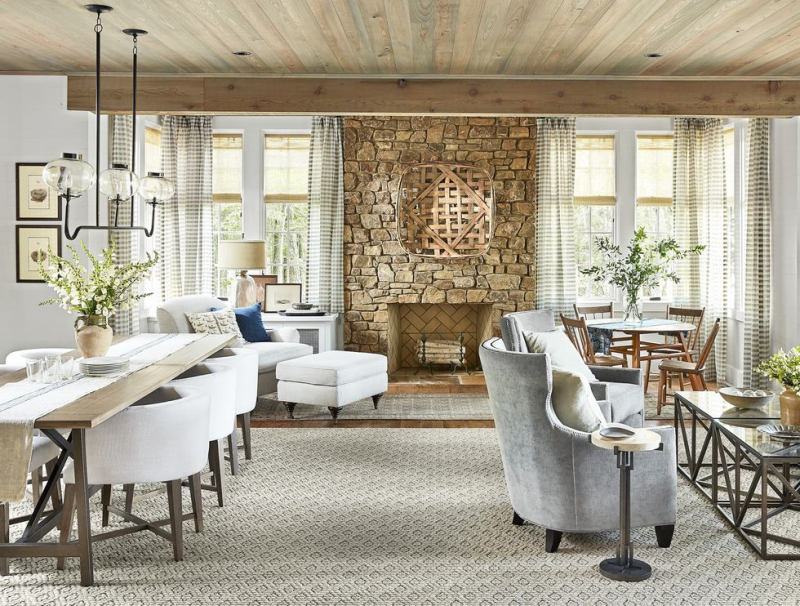
Best characteristics of Rustic Chic Design:
- Natural materials: Rustic chic design incorporates natural materials such as wood, stone, and brick. These materials are often left in their natural state or given a distressed finish to create a rustic look.
- Soft color palette: The color palette for rustic chic design tends to be soft and muted, with a focus on neutral shades such as beige, cream, and gray. These colors create a calming and relaxing atmosphere.
- Mixing old and new: Rustic chic design combines vintage or antique pieces with modern elements to create a unique and eclectic look. This can include vintage furniture pieces paired with modern lighting fixtures or artwork. The result is a space that feels comfortable and inviting, while still being stylish and contemporary
23. Zen
Zen interior design is inspired by the principles of Zen Buddhism, which emphasize simplicity, mindfulness, and harmony with nature. This style often incorporates natural materials, clean lines, and a muted color palette. Zen interiors are all about creating a peaceful and relaxing atmosphere that encourages mindfulness and meditation.
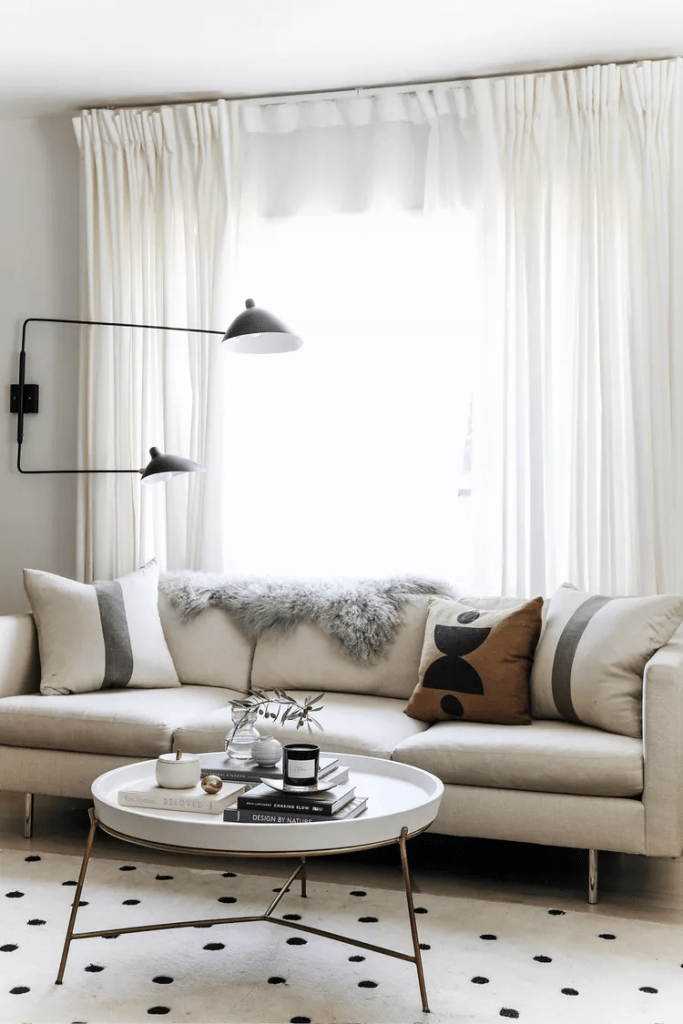
Best characteristics of Zen Design:
- Simplicity: Zen design emphasizes simplicity and minimalism. The idea is to create an uncluttered, calming environment that promotes relaxation and meditation.
- Natural elements: Nature plays a prominent role in Zen design. You will often find natural elements like wood, bamboo, stone, and water incorporated into the design.
- Serenity: Zen design aims to create a serene and peaceful atmosphere. Soft colors, such as whites, grays, and earth tones, are used to promote relaxation and a sense of calm. Lighting is also an important element in Zen design, with soft, ambient lighting used to create a tranquil environment.
24. Pop Art
Pop art interior design takes inspiration from the bold, colorful, and often irreverent art movement of the 1960s. This style often incorporates bright colors, graphic patterns, and iconic images from popular culture. Pop art interiors are all about fun and self-expression, and they can be a great way to inject some personality into your home.
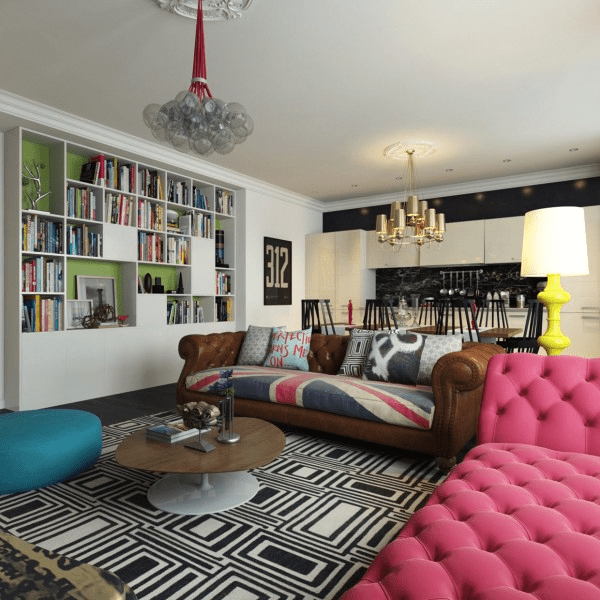
Best characteristics of Pop Art Design:
- Bold Colors: Pop art design is known for its use of bright, bold colors, often contrasting with each other to create a visually striking image.
- Playful and Whimsical: Pop art often incorporates playful and whimsical elements, such as cartoon characters, comic book graphics, and everyday objects used in unexpected ways.
- Repetition and Pattern: Pop art frequently uses repetition and pattern to create a sense of movement and dynamism in the design. This can include repeating a single image or pattern, or layering multiple elements on top of each other to create a complex composition
25. Southwestern
Southwestern interior design takes inspiration from the traditional architecture and design of the American Southwest. This style often incorporates natural materials like adobe, wood, and stone, as well as bright colors and bold patterns. Southwestern interiors are all about creating a warm and welcoming atmosphere that celebrates the rich cultural heritage of the Southwest.
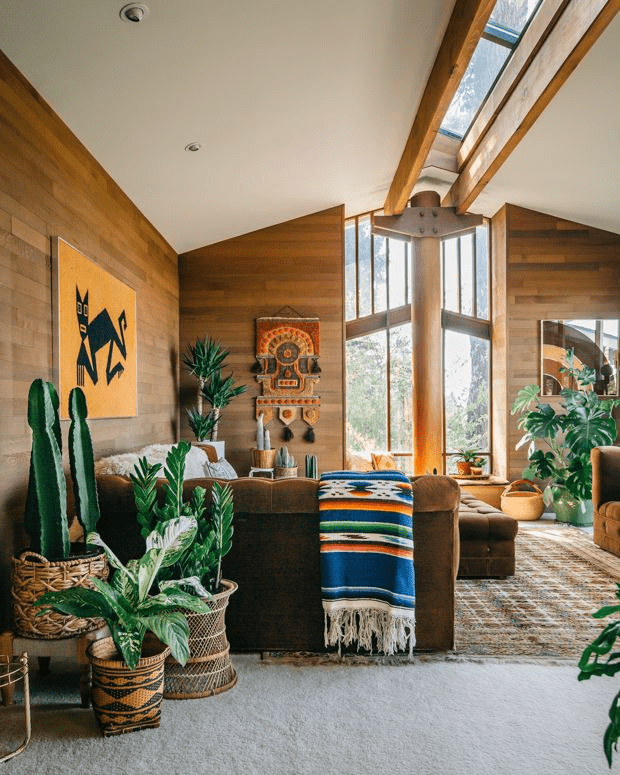
Best characteristics of Southwestern Design:
- Earthy colors: Southwestern design features a lot of warm, earthy tones such as terracotta, rust, and deep browns.
- Natural materials: Natural materials like wood, leather, and clay are often used in Southwestern design to create a rustic, earthy feel.
- Geometric patterns: Southwestern design often incorporates bold geometric patterns, such as triangles, diamonds, and stripes, inspired by the traditional art of indigenous Southwestern cultures.
26. Art Nouveau
Art Nouveau interior design is characterized by its organic shapes, flowing lines, and natural motifs. This style originated in Europe in the late 19th century and is often associated with the work of artists like
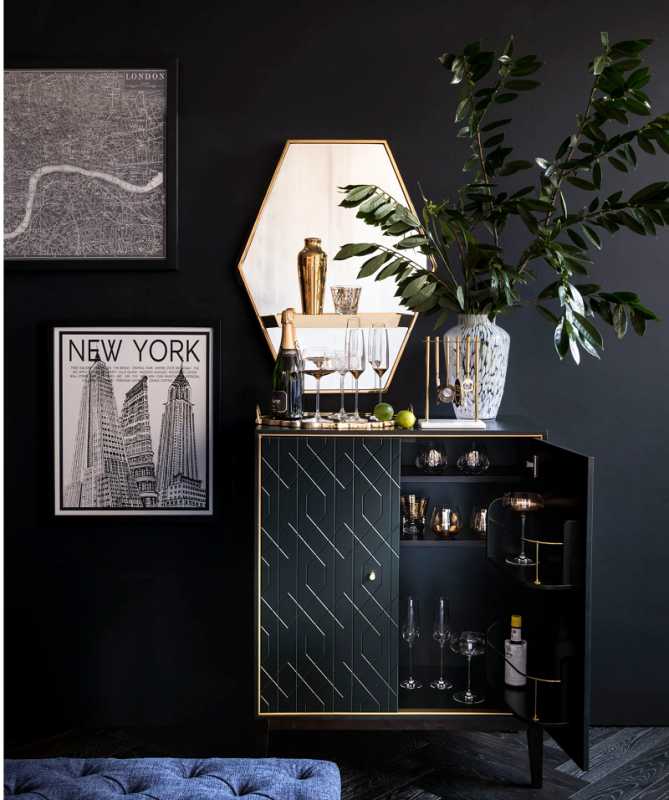
Best characteristics of Art Nouveau Design:
- Organic and natural forms: Art Nouveau design is characterized by the use of organic and natural forms, such as curving lines and floral motifs. These forms were often inspired by nature, including plants, flowers, and animals.
- Use of decorative elements: Art Nouveau design features a great deal of decorative elements, such as intricate patterns, stylized forms, and elaborate designs. These decorative elements are often integrated into the overall design of an object or space, rather than being added as an afterthought.
- Emphasis on craftsmanship: Art Nouveau design emphasizes the importance of craftsmanship and the use of high-quality materials. Artisans and craftsmen played a key role in creating Art Nouveau objects, and their work was often celebrated as an art form in its own right.
27. Colonial
Colonial style is inspired by the early American settlers and their homes. This style is characterized by simple and practical designs, often made from natural materials such as wood and stone. Colors used in colonial interiors are muted, with earthy tones like browns, greens, and blues dominating the palette. Furniture is often made from dark woods such as cherry and mahogany, with simple lines and minimal ornamentation.
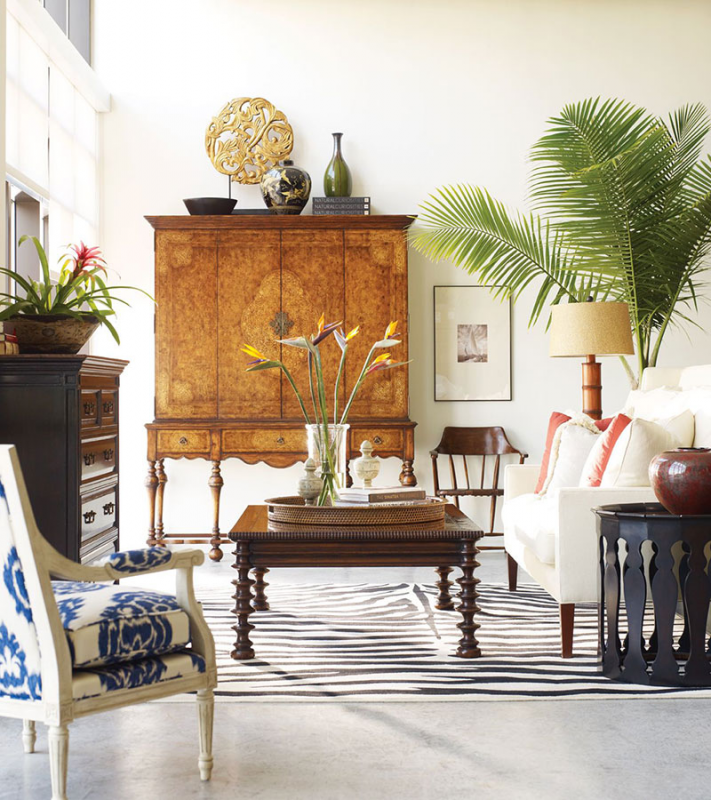
Best characteristics of Colonial Design:
- Symmetry: Colonial design places a strong emphasis on symmetry, with balanced and harmonious layouts being key.
- Traditional features: Colonial design incorporates traditional architectural features such as columns, shutters, and dormer windows, often in a simple and understated manner.
- Neutral color palettes: Earthy and neutral color schemes are commonly used in Colonial design, with whites, beiges, and browns being popular choices. These colors help to create a warm and welcoming atmosphere.
28. Mission
Mission style is inspired by the Spanish missions of California, and is characterized by its use of natural materials such as wood and stone. Furniture in this style is often made from oak, and features simple, clean lines with minimal ornamentation. The color palette for mission interiors is typically warm and earthy, with browns, greens, and reds dominating.
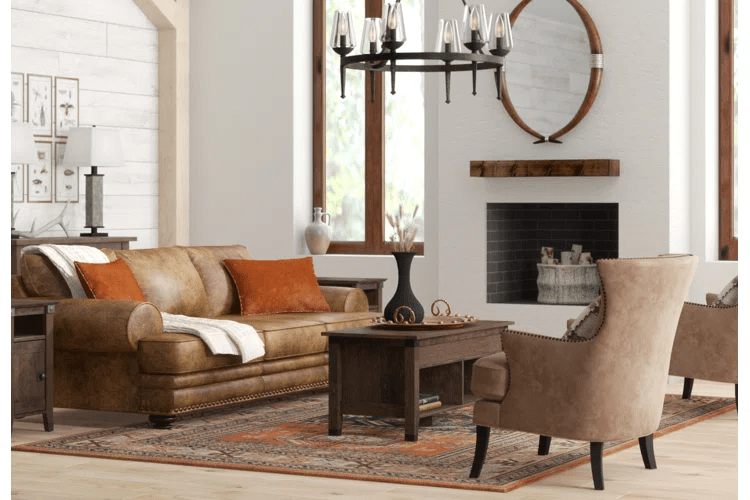
Best characteristics of Mission Design:
- Simple and geometric: Mission design emphasizes simplicity and functionality, with clean, straight lines and geometric shapes.
- Natural materials: This design style typically incorporates natural materials such as wood, stone, and iron, often left in their natural state to showcase their beauty.
- Earthy colors: Mission design often features earthy, warm colors such as brown, tan, and rust, with pops of brighter colors such as green or blue used sparingly as accents.
29. Tuscan
Tuscan style is inspired by the rustic elegance of the Italian countryside. This style is characterized by its use of warm, earthy colors like terracotta, olive green, and golden yellows. Furniture in Tuscan interiors is often made from dark woods like walnut and mahogany, and features ornate carvings and details. Textiles like tapestries, rugs, and curtains are often used to add warmth and texture to the space.
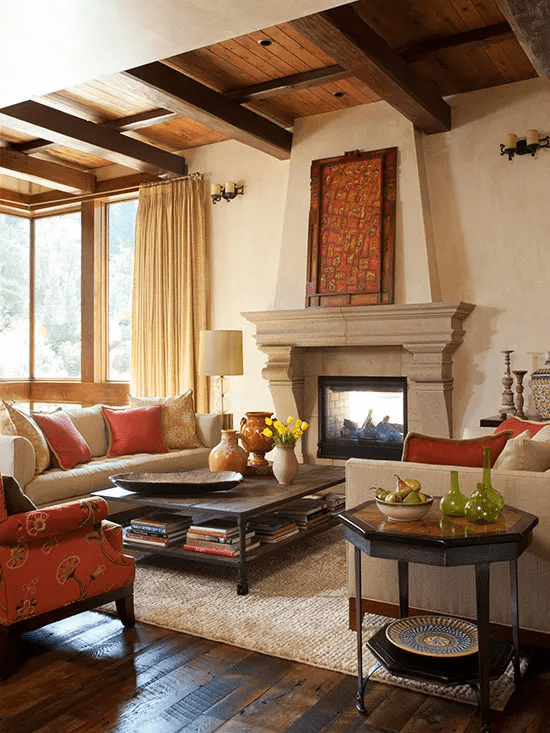
Best characteristics of Tuscan Design:
- Rustic and natural materials: Tuscan design emphasizes the use of natural materials such as stone, wood, and wrought iron to create a warm and rustic atmosphere.
- Earthy color palette: The colors of Tuscan design are inspired by the natural landscape of Tuscany and include warm earthy tones such as terracotta, ochre, and sienna.
- Old-world charm: Tuscan design incorporates elements of old-world charm such as distressed finishes, vintage furnishings, and ornate details. This style creates a sense of history and tradition that is both welcoming and comfortable.
30. Scandinavian
Scandinavian style is inspired by the minimalistic and functional designs of the Nordic countries. This style is characterized by its use of light and natural materials such as wood and leather, with a focus on functionality and simplicity. Colors used in Scandinavian interiors are often light and muted, with whites and pale blues dominating the palette. Furniture in this style features clean lines and simple, functional designs.
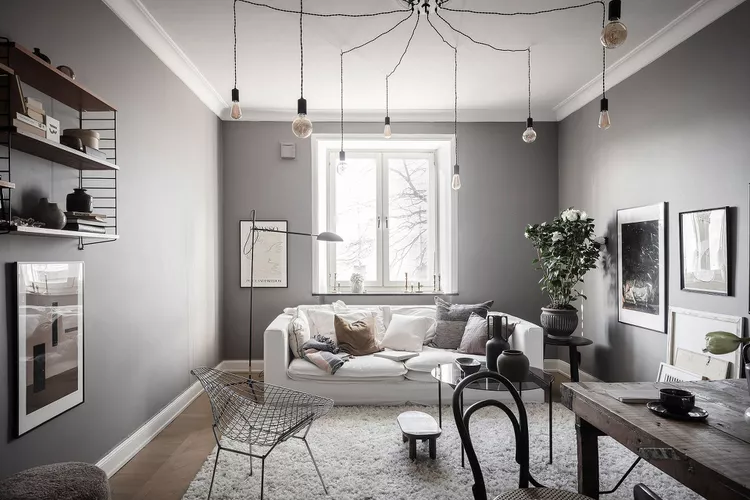
Best characteristics of Scandinavian Design:
- Minimalism: Scandinavian design is known for its simplicity and minimalism. This style emphasizes clean lines, functionality, and uncluttered spaces.
- Natural materials: The use of natural materials is also a key feature of Scandinavian design. Wood, leather, wool, and stone are often used to create warm and inviting spaces.
- Light and bright: Scandinavian design makes use of natural light and bright, neutral colors to create a feeling of spaciousness. White, beige, and light gray are common color choices in this style.
31. Traditional
The traditional style is timeless and elegant. It’s characterized by rich wood tones, ornate details, and luxurious fabrics. This style often includes classic furniture pieces, such as wingback chairs, Chesterfield sofas, and four-poster beds.
Most Popular Post:
10 Surprising Benefits of Printable Wall Art
15 Must-Have Accessories For Styling A Coffee Table
How to Choose the Perfect Interior Color Scheme for Your Home
Expert Guide On How To Buy A Rug For Each Room
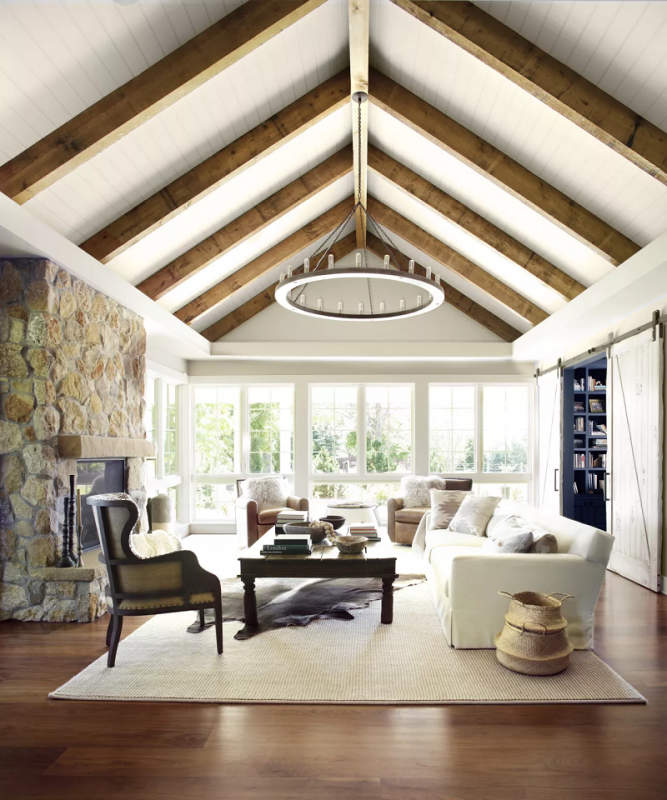
Best characteristics of Traditional design:
- Ornamentation: One of the main characteristics of traditional design is the use of ornate details and decorative elements. These can include moldings, carvings, and intricate patterns on furniture and textiles.
- Rich colors: Traditional design often features rich and bold colors, such as deep reds, greens, and blues. Earthy tones like brown and beige are also common.
- Classic furniture: Traditional design often incorporates classic furniture pieces, such as wingback chairs, roll-arm sofas, and antique tables. These pieces are typically made from high-quality materials and feature intricate details and designs.
In conclusion, with so many different interior design styles to choose from, it can be overwhelming to decide which one is right for your home. By understanding the key characteristics of each style, you can narrow down your options and choose the one that best reflects your personality and lifestyle. Remember to mix and match different elements from various styles to create a unique and personalized space that truly feels like home.
We hope this article has given you a better understanding of the 35 most important interior design styles you should know about. Whether you prefer the sleek lines of modern design, the ornate details of Victorian style, or the rustic charm of farmhouse decor, there’s a style out there that’s perfect for you.
FAQs:
A: What is the difference between modern and contemporary design?
Q: Modern design refers to a specific time period, typically the mid-20th century, while contemporary design is constantly evolving and reflects current trends and styles.
A: What is the difference between minimalism and maximalism?
Q: Minimalism is characterized by a focus on simplicity and functionality, while maximalism is characterized by bold colors, patterns, and textures, with an emphasis on decorative elements.
A: What is the difference between traditional and transitional design?
Q: Traditional design is characterized by classic and formal details, while transitional design blends traditional and contemporary styles to create a more relaxed and updated look.
A: What is the difference between industrial and rustic design?
Q: Industrial design features raw and utilitarian materials such as metal and concrete, while rustic design emphasizes natural and organic materials such as wood and stone.
A: What is the difference between French country and English country design?
Q: French country design emphasizes rustic elegance and natural materials, while English country design is characterized by cozy and comfortable spaces with a focus on classic patterns and textiles.
A: What is the difference between Art Deco and Art Nouveau design?
Q: Art Deco design features bold geometric shapes and luxurious materials, while Art Nouveau design emphasizes natural and organic shapes and motifs.
A: What is the difference between Mediterranean and Tuscan design?
Q: Mediterranean design features warm colors and textures inspired by coastal regions around the Mediterranean Sea, while Tuscan design emphasizes rustic elegance and features warm and earthy colors.
A: What is the difference between Japandi and Scandinavian design?
Q: Japandi design is a blend of Japanese and Scandinavian styles, characterized by simplicity, minimalism, and natural materials, while Scandinavian design emphasizes functionality and simplicity, with a focus on light colors and natural materials.
A: What is the difference between Hollywood Regency and Art Deco design?
Q: Hollywood Regency design is a glamorous and luxurious style inspired by the golden age of Hollywood, while Art Deco design emphasizes bold geometric shapes and luxurious materials.
A: What is the difference between Eclectic and Bohemian design?
Q: Eclectic design blends various styles and periods, while Bohemian design emphasizes a free-spirited and artistic vibe, with a focus on bright colors and patterns.
CATCH THE LATEST IN HOME DECOR TRENDS:
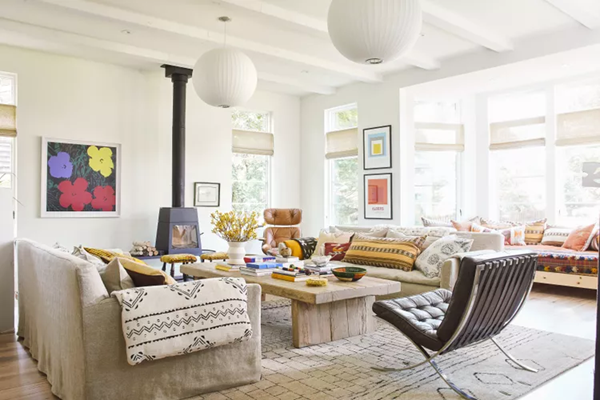
Steal These 15 Expert-Approved Decorating Secrets

How To Accessories Your Living Room

Small Space? 10 Ways To Make A Room Appear Bigger

Make Your space Look Expensive
GET CAUGHT UP ON ALL THE INSPIRING DECOR TIPS:

18 Fresh Decorating Ideas To Update Your Fireplace

How To Create An Art Gallery Wall

